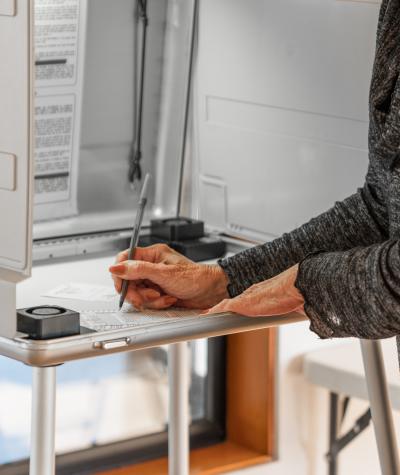With the New York City mayoral primary election less than a month away, people are starting to pay increased attention to the election not only because of the candidates who are running or because of the vast amounts of money that are being spent but also because of the way that New Yorkers will get to select their preferred candidates.
For the first time, New York City voters will choose their candidates using an election system called ranked choice voting (RCV).
RCV gives voters the option to rank candidates in order of preference. Those who want to vote for only one candidate still can. An instant runoff process is then used and the election is decided as soon as one candidate receives a majority of the votes.
If no candidate gets a majority of the vote the first time, the candidate with the least amount of support is eliminated, and the second-choice votes for that eliminated candidate are redistributed. The process is repeated until a candidate wins more than half of the vote.
In multi-winner elections, which, for example can happen in city council races, the process is largely the same. The primary difference is that the threshold percentage of votes needed to win a seat is less than 50%, because more seats are up for election.
As our country grapples with increased division and partisan polarization, RCV is an election system that is becoming increasingly popular across the political spectrum because it promotes inclusivity and participation by putting more power in the hands of voters.
RCV provides several benefits for those who want our democracy to work better. One of the most important ones is that it removes incentives for negative campaigning and increases civility among candidates, because it fosters more choice, more competition and a greater need for cooperation.
For instance, Lee Drutman, senior fellow in the political reform program and Anne-Marie Slaughter, CEO of New America, a think tank that uses legal, political and technological tools to promote American democracy, wrote in an October 2020 op-ed:
“[Under a ranked choice voting system] politicians would also be driven to campaign differently, too. Under our current plurality rules, campaigns often play the ‘lesser of two evils’ game, filling the airwaves with negative campaigning that casts the opposing candidate and party as dangerous, extreme and radical, encouraging voters to fear and loathe the other party.
Under ranked-choice voting, the incentives push candidates to build broader coalitions.”
Since no candidate knows whether someone will garner enough votes to win in the first round, each candidate is incentivized to capture the votes of those who may not have picked them as their first choice. To do this, they must try to appeal to a wider array of voters than they would have otherwise.
Elections decided by RCV encourage more people to run for office. Consequently, a greater number of Independent and minor party candidates can run for office and win, giving Independent voters greater agency in the ultimate outcome.
The same is also true for candidates from historically marginalized groups, including communities of color like Black, Hispanic, Asian American and Native American people, as well as women.
Beside expanding the diversity of candidates who run, RCV also expands opportunities for candidates from groups that have struggled to gain representation or become officeholders themselves.
FairVote, a nonprofit that champions RCV, studied two decades of elections in California cities. The study showed that the share of women candidates and candidates of color grew to 26% from 17% in the municipalities with this election system.
Further, many political scientists have attributed low voter turnout to the large number of elections held in the United States. By eliminating the need for runoff elections, RCV decreases the overall number of elections and could help increase voter turnout.
Generally, with higher voter turnout, candidates have a stronger incentive to be less partisan and less negative. This helps them appeal to a broader swath of the electorate.
Because of RCV’s clear benefits, the number of places using it is growing rapidly. In their most recent elections, 21 jurisdictions used RCV, but 52 jurisdictions are expected to use RCV in their upcoming elections, according to FairVote.
In addition to New York City, a variety of cities and towns across the country have enacted RCV for various municipal elections, including San Francisco, California, Minneapolis, Minnesota, Cambridge, Massachusetts, Takoma Park, Maryland and Las Cruces, New Mexico.
Voters in the states of Maine and Alaska have also approved constitutional amendments to institute RCV for all statewide elections in 2016 and 2020 respectively. The Maine amendment extended this to congressional elections while the Alaska amendment allows RCV to be used for all federal elections.
Last year, Campaign Legal Center (CLC) supported the passage of Ballot Measure 2, the initiative that implemented RCV in Alaska and is now providing legal assistance to defend the provisions in this ballot measure from a lawsuit filed by those opposed to making Alaska’s elections more transparent and inclusive.
Currently, CLC is also representing Latino voters in Yakima County, Washington in court as they fight for a more equitable and representative voting system, like RCV, that would enable them to elect their preferred candidates.
The trend toward adopting RCV in many jurisdictions across the country is encouraging. More places should consider joining them to give their voters a greater say and decrease partisan polarization. At this critical moment for our democracy, this election system places power in the hands of voters, where it belongs.
